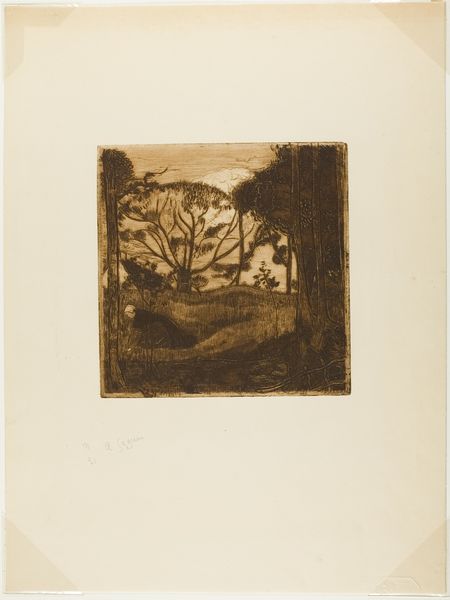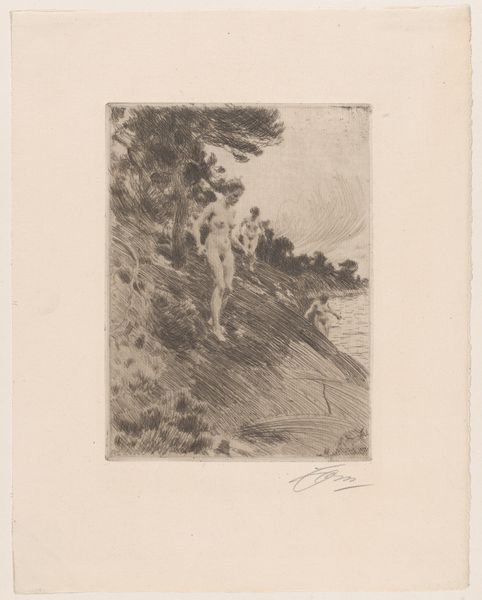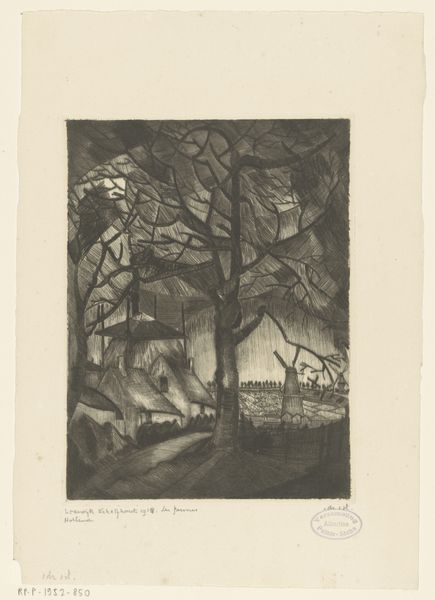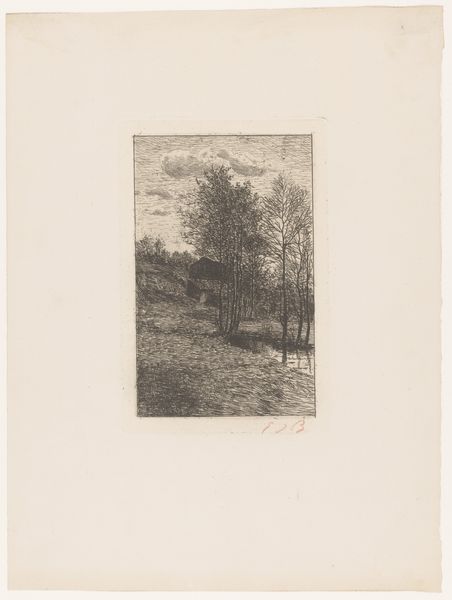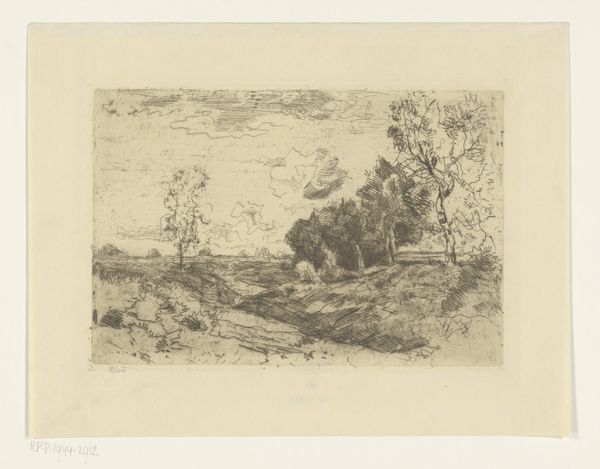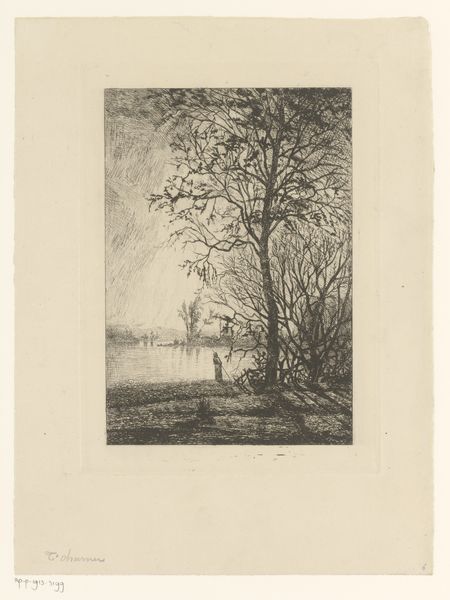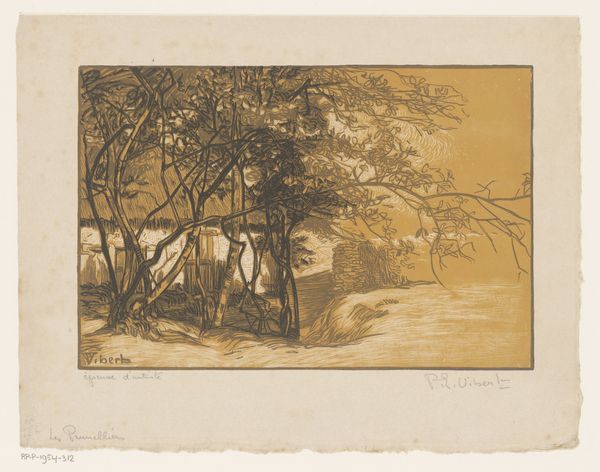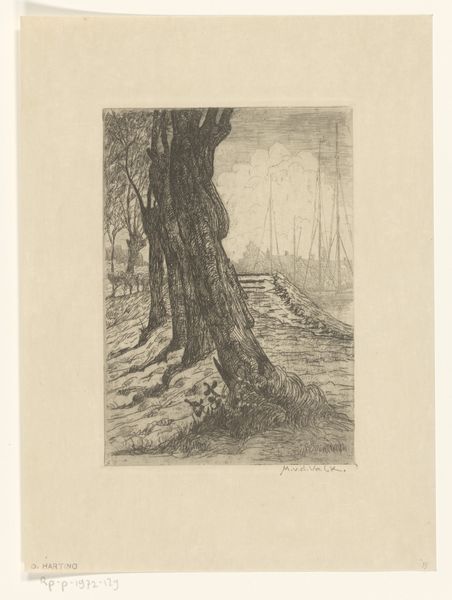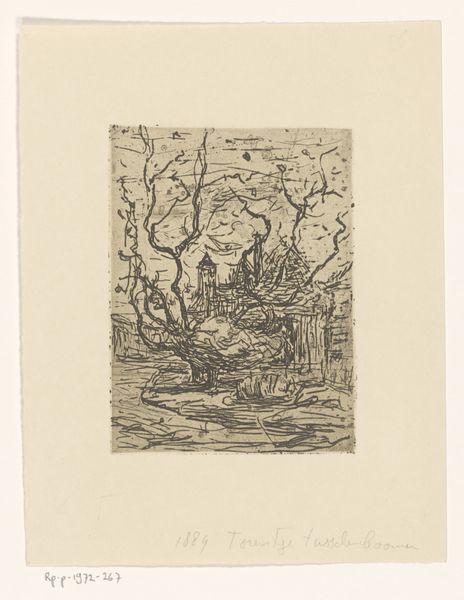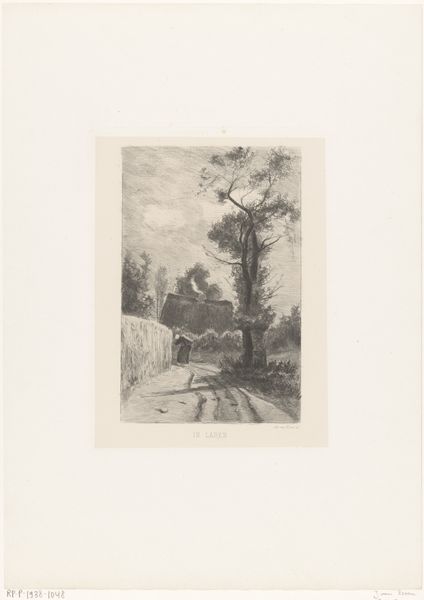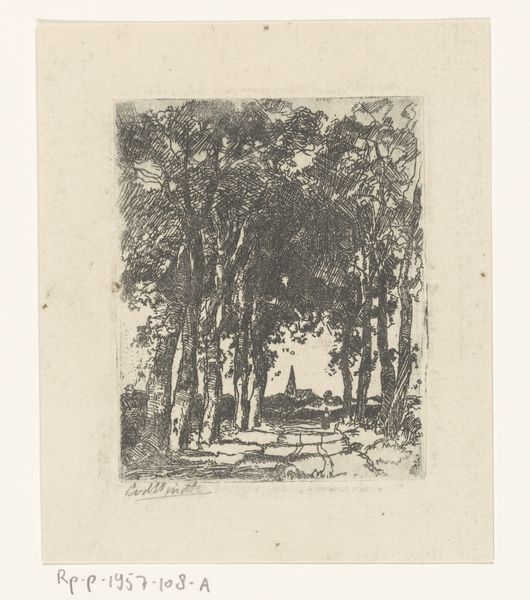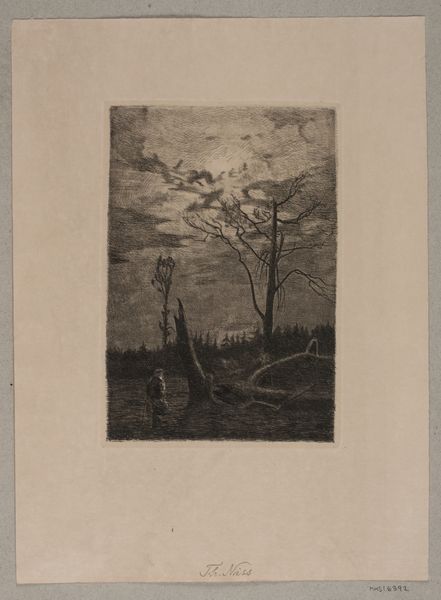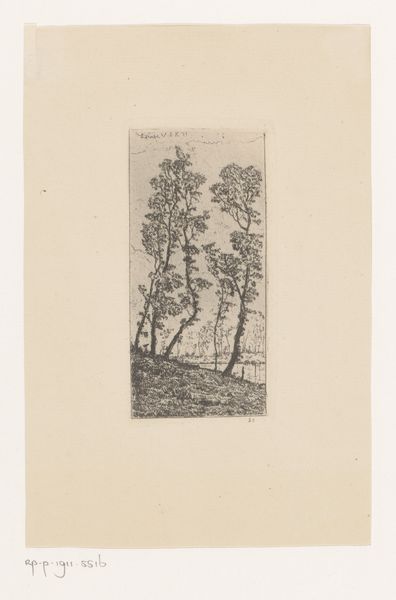
Dimensions: height 420 mm, width 420 mm
Copyright: Rijks Museum: Open Domain
Albert Baertsoen made this etching, "Landschap met laan richting Oostende" – or "Landscape with lane towards Oostende" - sometime in the late 19th or early 20th century. Etching is an intricate printing process. The artist covers a metal plate with a waxy, acid-resistant layer, then draws into that layer, exposing the metal. Immersing the plate in acid bites away the exposed lines, creating grooves. Ink is then applied to the plate, filling these grooves, and the surface is wiped clean. Finally, the plate is pressed onto paper, transferring the ink and creating the print. The network of lines, and their tonal range, speaks to Baertsoen’s skill and the time-intensive nature of this process. Although part of a numbered edition, each print possesses a unique quality, imbued with the gestures and labor of the artist. In foregrounding this kind of atmospheric, natural scene, artists were making a deliberate turn away from industrialization. Yet, paradoxically, they did so by embracing a process made possible by the rise of industrial chemistry.
Comments
No comments
Be the first to comment and join the conversation on the ultimate creative platform.
